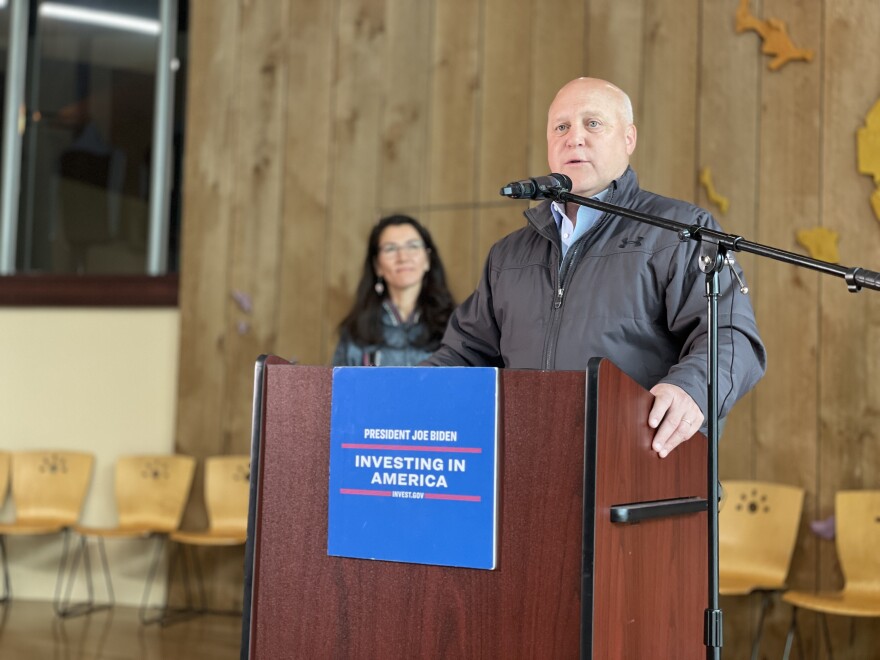White House Infrastructure Coordinator Mitch Landrieu was in Anchorage Tuesday to announce $100 million in broadband infrastructure grants to rural Alaska, and to spotlight the broader sweep of federal funds the Biden administration has sent to Alaska.
“Just in the last week, we have been here and announced a number of different things,” Landrieu said, shuffling documents at a podium at the Alaska Native Heritage Center. “I'm trying to find the card that highlights that.”
He found the list: $22 million for energy in Port Graham, $44 million for salmon passage, and $10 million for salmon recovery — all in the last week.
“So when you add up the visits of the first lady, the attorney general, the secretary of Transportation, and mine as well — if you add up just what we did in last week, if you add up the $5 billion that's already been sent for the 900 projects and the $100 million come in today — the only conclusion that you can reach is Joe Biden and his administration care a lot about the people of Alaska,” he said.
Landrieu, a former mayor of New Orleans, is following an established practice. August marks the season when important federal officials travel to Alaska to trumpet big projects. And this is how it’s done: Visiting cabinet members and appointees hold press conferences, often in Anchorage. They credit the president, along with members of Congress present — in Tuesday’s case, Congresswoman Mary Peltola. They also fly to smaller communities, which Alaska’s congressional delegation insists on, so the officials can see how very different rural Alaska is from the rural parts of their own home states.
The VIP announcements and visits this year are coming especially fast, thanks in large part to the major infrastructure bill Congress passed in 2021.
The broadband money is divided, almost equally, among three fiber-optic projects. One $35 million project is for Hoonah.
“This network will benefit 28 people, eight businesses and one educational facility,” a government fact sheet about the grant says.
That may seem like it comes to about a million dollars per person.
But Chris McLean, assistant secretary of the Rural Utilities Service of the U.S. Department of Agriculture, said looking at the number of homes served is the wrong math. The whole country, he said, should benefit from the genius and creativity of rural Alaskans.
“The denominator should be the population of the United States, because you're completing our network,” he said. “Because every one of these investments, even when they're small communities, adds to a greater network of communication. And that's our mission, so we are really proud to be part of that. And this is money very, very well spent.”
Another one of the grants goes to GCI subsidiary Unicom to bring subsea fiber optic cable from Platinum into the Yukon-Kuskokwim Delta communities of Toksook Bay, Tununak and Emmonak. Consumers in that region are now switching to Starlink — a satellite service. But GCI senior Vice president Billy Wailand said he’s not worried about the competition. He said Starlink is a good service for now, but fiber optic has much more capacity.
“In the long term, if you get fiber into a village,” he said, “the type of speeds that you can deliver, and the long-term trajectory, as demands actually increase your ability to keep up with it, there's really no substitute.”
Wailand said GCI will use its grant money to further its goal of bringing urban-level speeds and prices to rural Alaska. He said subsidies could lower an eligible household’s monthly bill to zero.
A few hours after the broadband announcement and a few miles away, U.S. Attorney General Merrick Garland was holding his own event. He announced $22 million in grants to help 67 Alaska tribes.


